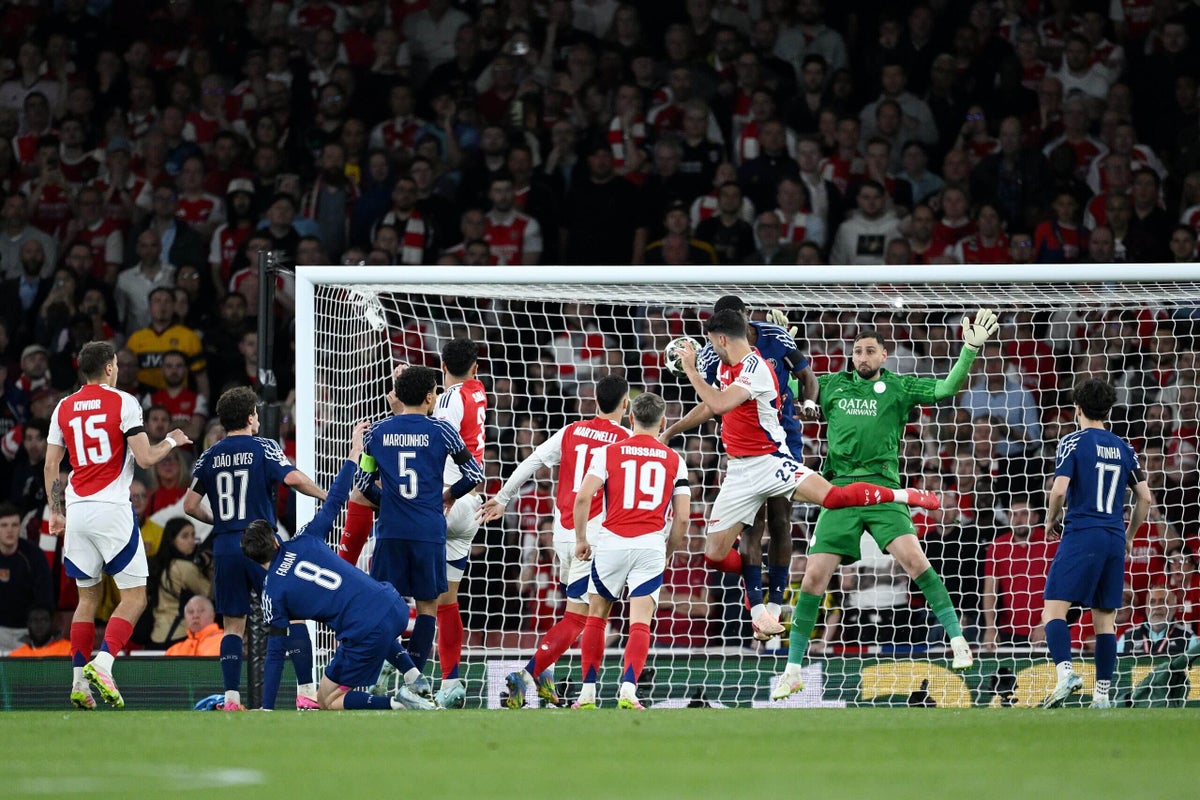Arsenal's Offside Free-Kick: Analyzing the Effectiveness and Future Use
Arsenal's innovative offside free-kick tactic, famously employed against Brentford, has sparked a fervent debate amongst football analysts and fans alike. Was it a stroke of genius, a lucky fluke, or a tactical approach with significant future potential? Let's delve into the effectiveness and future use of this intriguing strategy.
The Brentford Game: A Tactical Masterclass or a One-Off?
The controversial incident against Brentford saw Arsenal take a free-kick while technically offside. The execution was flawless: a quick, incisive pass to a teammate positioned in an offside position, who then laid it off for a goal-scoring opportunity. While the referee didn't call the offside, the legality of the play remains a subject of considerable discussion, raising questions about the interpretation of the laws of the game concerning free kicks and offside positions.
This sparked a whirlwind of reactions: some praised Mikel Arteta's tactical acumen, highlighting its innovative nature and potential to disrupt the opponent's defensive setup. Others, however, criticized the tactic as borderline cheating, questioning its ethical implications and sustainability.
Analyzing the Effectiveness:
The effectiveness of Arsenal's offside free-kick hinges on several factors:
- Speed of execution: The success relies on lightning-fast interplay, catching the opposition off guard before they can react to the offside position.
- Player positioning and movement: Precise positioning of both the receiving and passing players is crucial for a successful execution. A slight misjudgment can result in a wasted opportunity or a potential offside call.
- Opponent's awareness: The tactic's effectiveness diminishes if the opposing team is aware of it and adjusts its defensive strategy accordingly.
While the Brentford game showcased its potential, it's too early to definitively label it a consistently effective tactic. Its success is contingent on numerous unpredictable variables.
Future Use: A Gamble Worth Taking?
The future application of this tactic depends on several factors:
- Rule interpretation clarification: The lack of clear guidelines regarding offside positions during free-kicks creates ambiguity. Any future use will depend on referees' consistent interpretation of the rules.
- Opponent adaptation: As teams become more aware of this tactic, we can expect to see them adapt their defensive strategies to counter it.
- Arsenal's tactical flexibility: Arsenal's continued use will depend on its integration within their broader tactical approach and its suitability for different opponents and match situations.
While it’s unlikely to become a regular feature of Arsenal's game plan, its surprise factor offers a valuable weapon to disrupt opponents. Using it strategically, perhaps as a set-piece variation, might still yield unexpected results.
Conclusion: A Tactical Novelty with Uncertain Long-Term Prospects
Arsenal's offside free-kick is undeniably a captivating tactical innovation. Its immediate impact and the controversy surrounding it have ensured its place in footballing history. Whether it becomes a widely adopted tactic or remains a one-off tactical masterstroke remains to be seen. The future will depend on rule clarifications, opposing team adaptations, and Arsenal's own tactical choices. The debate surrounding this tactic, however, highlights the ongoing evolution of football and the ingenuity of its managers.
Further Reading:
- [Link to an article discussing the laws of the game regarding offside]
- [Link to an article analyzing Arsenal's tactical approach under Arteta]
Keywords: Arsenal, Offside, Free-kick, Brentford, Mikel Arteta, Tactical Innovation, Football Tactics, Premier League, Football Strategy, Set-piece, Laws of the Game, Offside Rule.

